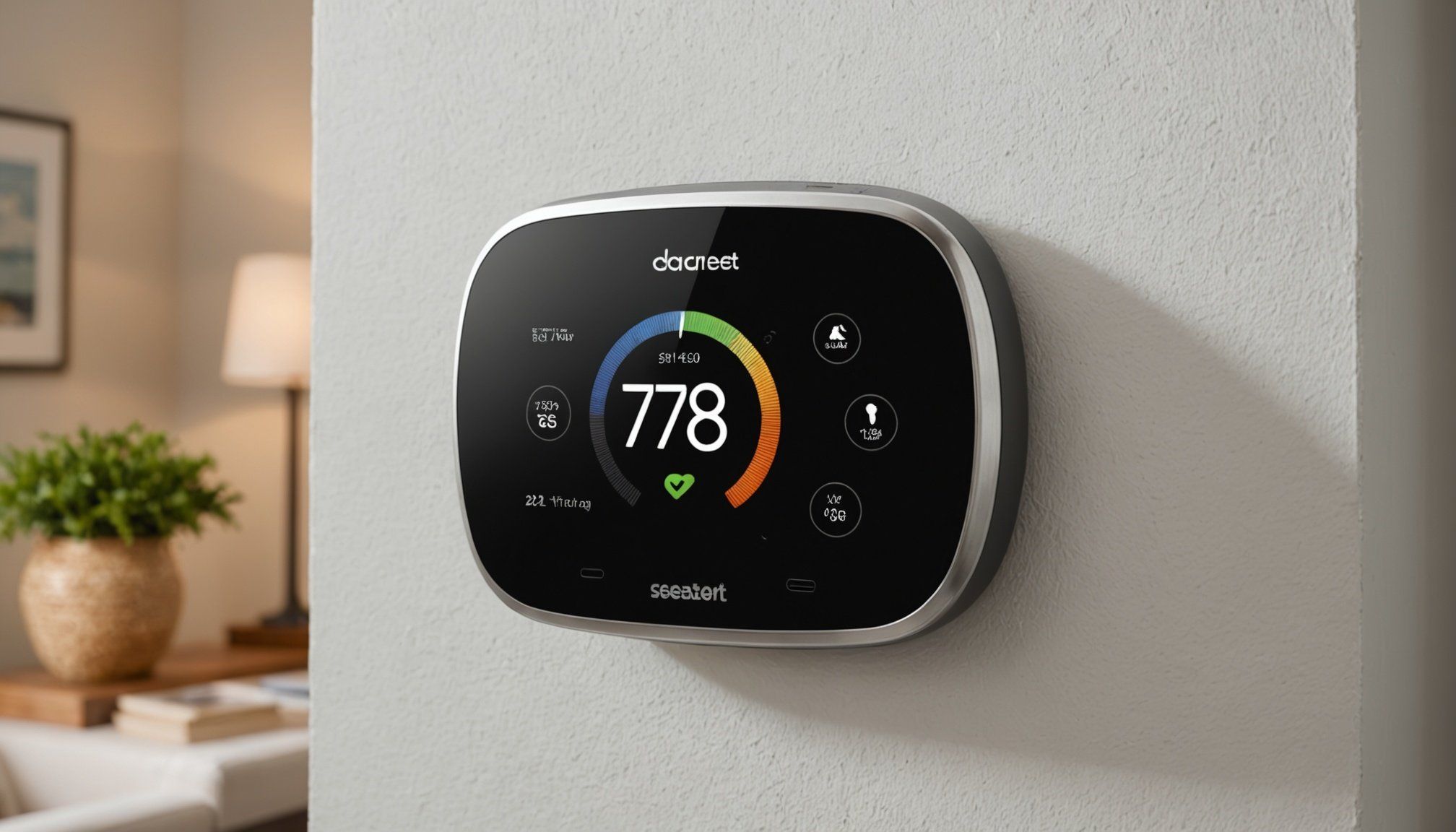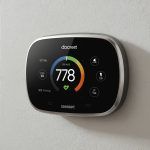Understanding Smart Thermostats and Their Benefits
Smart thermostats have revolutionized home temperature control by offering advanced energy efficiency solutions and potential cost savings. They stand out from traditional thermostats through their ability to understand user preferences and adapt accordingly. Technologies integrated within these devices include sensors, Wi-Fi connectivity, and straightforward interfaces compatible with smartphone integration, allowing for remote adjustments.
One of the primary contributions of smart thermostats to energy savings is their ability to learn and modify heating and cooling schedules autonomously. Programmable settings enable users to fine-tune their environment based on specific hours or daily routines, significantly reducing unnecessary energy expenditure. Furthermore, features like geofencing can switch systems on or off based on the user’s proximity, ensuring that energy use drops when the house is vacant.
Have you seen this : Email Efficiency Unleashed: Expert Strategies for Effortlessly Managing Multiple Accounts on Your Tablet
When considering the cost-benefit analysis of upgrading to a smart thermostat, the short-term investment promises long-term financial rewards through reduced utility bills. Calculating the payback period often reveals that, despite the initial expenditure, savings stem not just from minimized energy consumption but also from governmental rebates and incentives promoting energy-efficient appliances. Overall, smart thermostats provide both an environmental benefit and monetary efficiency, making them a worthwhile consideration for any household.
Connecting Your Smartphone to a Smart Thermostat
Integrating your smartphone with a smart thermostat opens the door to effortless climate control. Begin by downloading the thermostat’s specific app, crucial for seamless smartphone integration. Compatibility is a key factor to consider; ensure your smartphone’s operating system aligns with the app’s requirements, typically listed in the app store description.
Additional reading : Email Efficiency Unleashed: Expert Strategies for Effortlessly Managing Multiple Accounts on Your Tablet
Once the app is installed, proceed with the setup process by creating an account. This step is necessary for remote access and personalized settings. Verify that your Wi-Fi network is stable, as a robust Wi-Fi connection is essential for optimal performance, including updates and remote commands.
Now, follow the app’s user-friendly prompts to connect your smartphone to the thermostat. This usually involves entering a pairing code from the thermostat into the app. Some advanced models might support Bluetooth pairing for added convenience.
After connecting, explore features such as remote control, enabling temperature adjustments from anywhere. This functionality is not only convenient but also instrumental in achieving energy efficiency by allowing real-time changes based on your routine. Keep your app updated to benefit from the latest features and improvements, ensuring your home’s climate remains under your smooth command.
Energy-Saving Features of Smart Thermostats
Smart thermostats offer several energy-saving features designed to optimize household heating and cooling. These innovative devices stand out through programmable settings, allowing users to customize temperature adjustments according to personal schedules. Such precise programming minimizes energy waste during unoccupied hours, directly impacting energy consumption reduction.
Scheduling and Programming Options
Understanding the scheduling options provided by smart thermostats is crucial for personalized comfort. Users can set specific temperatures for different times of the day, ensuring a harmonious balance between comfort and efficiency. These programmable settings adapt to daily routines, whether during weekday work hours or weekend relaxation periods.
Geofencing Benefits
Another commendable feature is geofencing, which switches the thermostat’s modes based on your proximity to home. This function uses smartphone GPS data to determine whether to activate or de-activate the system, leading to energy conservation when no one is home. The automated adjustments further ensure building systems operate when truly needed, optimizing efficiency.
Energy Usage Reports
Analysing energy usage reports helps in making informed decisions regarding energy consumption. These reports provide insights into patterns and highlight areas for improvement. They enable tracking savings and determining adjustments for maximum efficiency. The sheer visibility into energy consumption empowers users to make proactive changes, underpinning sustainable energy practices.
Popular Smart Thermostat Comparisons
The realm of smart thermostats has expanded with a variety of distinctive brands and models, each offering unique features tailored towards enhancing energy efficiency. In today’s market, several models stand out due to their advanced functionalities.
One of the top contenders is the Google Nest Learning Thermostat, renowned for its ability to learn user preferences and automatically adjust schedules. This capability ensures personalised comfort alongside energy savings. Another popular option is the Ecobee SmartThermostat, which features built-in Amazon Alexa. It allows for seamless voice control and integrates additional smart devices, enhancing user experience through extensive compatibility.
It’s beneficial to consider user testimonials when choosing a thermostat. Many users commend the Nest for its intuitive design and reliable performance. Meanwhile, the Ecobee receives praise for its comprehensive smart home integration.
When selecting a smart thermostat, it’s advisable to examine various aspects such as ease of use, remote control functionality, and potential cost savings from enhanced energy efficiency. Each model brings its own strengths, catering to different user needs and preferences, so thorough research and product comparisons can guide you towards the optimal choice for your household.
Troubleshooting Common Issues
Navigating the world of smart thermostats can sometimes lead to technical challenges, but troubleshooting common issues doesn’t have to be daunting. Armed with the right information, resolving connectivity problems can become a simple task.
Connectivity Issues
One frequent problem involves maintaining a stable Wi-Fi connection. Ensure that your smart thermostat is within range of your router, as proximity affects performance. Rebooting the router or thermostat might resolve temporary disconnections. For persistent issues, check if the firmware is up-to-date, as manufacturers often address connectivity bugs through software updates.
App Malfunctions
Another common hurdle is app-related malfunctions, which can impede your ability to control your thermostat remotely. In these cases, uninstalling and reinstalling the application often resolves glitches. Ensure both your smartphone‘s operating system and the app are updated. Regular updates enhance compatibility and app performance, preventing unnecessary interruptions.
Thermostat Calibration
Proper thermostat calibration is essential for accurate temperature readings. If the thermostat’s display doesn’t match room conditions, consult the user manual for guidance on recalibrating. In most models, accessing the thermostat’s menu will provide calibration options. Regular maintenance ensures ongoing accuracy and reliability, keeping your climate control experience smooth and efficient.
Maximizing Energy Savings with Your Smart Thermostat
Maximizing energy savings with smart thermostats revolves around effective energy optimization and implementing best practices. Key strategies help ensure your thermostat facilitates long-term savings through tailored settings.
Tips for Optimizing Settings
- Program Schedules: Set routines that align with your daily habits. Customize temperatures based on occupancy to minimize usage during off-hours.
- Comfort Balance: Find an optimal balance between energy savings and household comfort to maintain effective energy management.
Seasonal Adjustments and Performance
Seamless seasonal adjustments are crucial for optimum performance. During warmer months, increase temperatures slightly when the home is empty. Conversely, lower temperatures during winter. These subtle tweaks enhance energy efficiency.
Utilizing the programmable settings ensures your thermostat adapts to changing seasons without manual intervention.
Long-term Financial Benefits
Energy-efficient practices significantly impact your utility bills. Consistent usage of smart thermostats can lead to measurable reductions in energy expenditure, thus ensuring valuable cost savings over time. With integrated features like learning algorithms, these devices adjust efficiently, promising potential long-term savings. Implementing these strategies, you create a more sustainable, cost-effective home environment.










